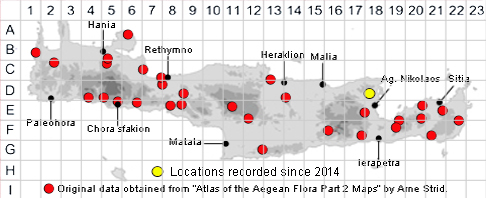
SPECIES DESCRIPTION
LACTUCA ACANTHIFOLIA
Family:- COMPOSITAE/Sect. PHOENIXOPUS
Common Names:- None
Synonyms:- Chondrilla acanthifolia, Phaenixopus acanthifolius,
Prenanthes acanthifolia, Scariola acanthifolia.
Meaning:- Lactuca (L) Reference to the milky sap.
Acanthifolia (L) Thorny leaved.
General description:- Perennial. Rhizome large, covered with remains of leaves.
Stem:-
1) 30-100 cm, erect, striate, glabrous except for the arachnoid-lanate base.
Leaves:-
1) Lower, very variable in shape, oblong-ovate or spathulate in outline, lobed or
pinnatifid, rarely entire, petiolate;
2) Upper pinnatipartite, auriculate; all densely arachnoid-lanate on the proximal side
. of petiole and sometimes on midrib, otherwise glabrous or subglabrous
Flowers:-
1) Capitula subsessile in a spike-like panicle, solitary or in small fascicles.
2) Involucral bracts lanate at apex.
3) Ligules yellow.
Fruit:-
1) Achenes 8-9 mm; body oblong-lanceolate, 5- to 7-ribbed, yellowish-brown; beak
½ as long as or as long as the body.
Key features:-
1) Stem glabrous or with eglandular hairs below. Arachnoid-lanate at the base.
2) Achenes yellowish-brown.
Habitat:- A typical chasmophyte, growing in crevices and ledges of limestone cliffs,
(occasionally other substrates), generally in semi-shade. 0-800 m.
Distribution:- Endemic Crete, Aegean & SW. Turkey. Widely scattered on Crete,
but not common.
Flowering time:- (June-) July-Sept.
Photos by:- Fotis Samaritakis
